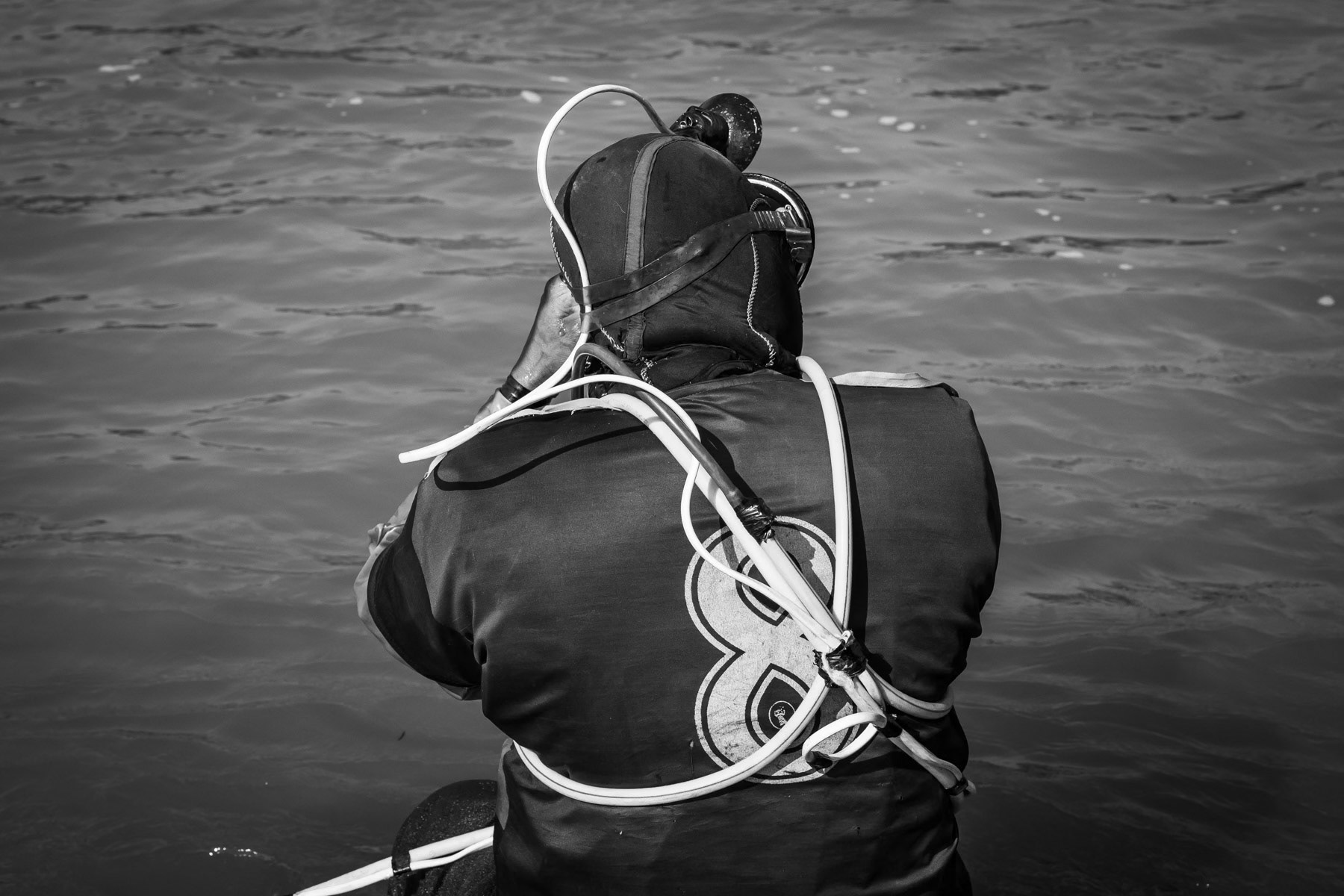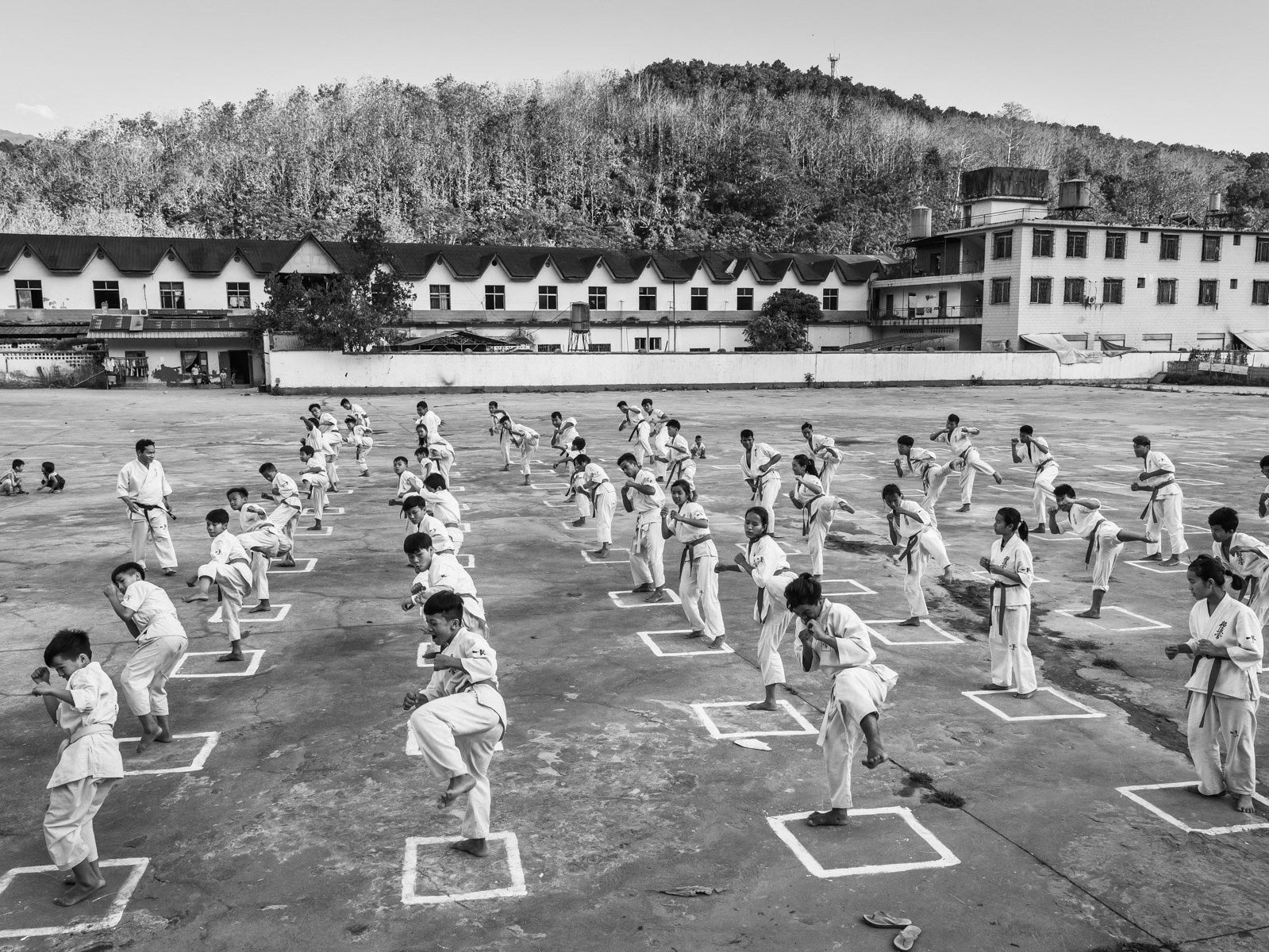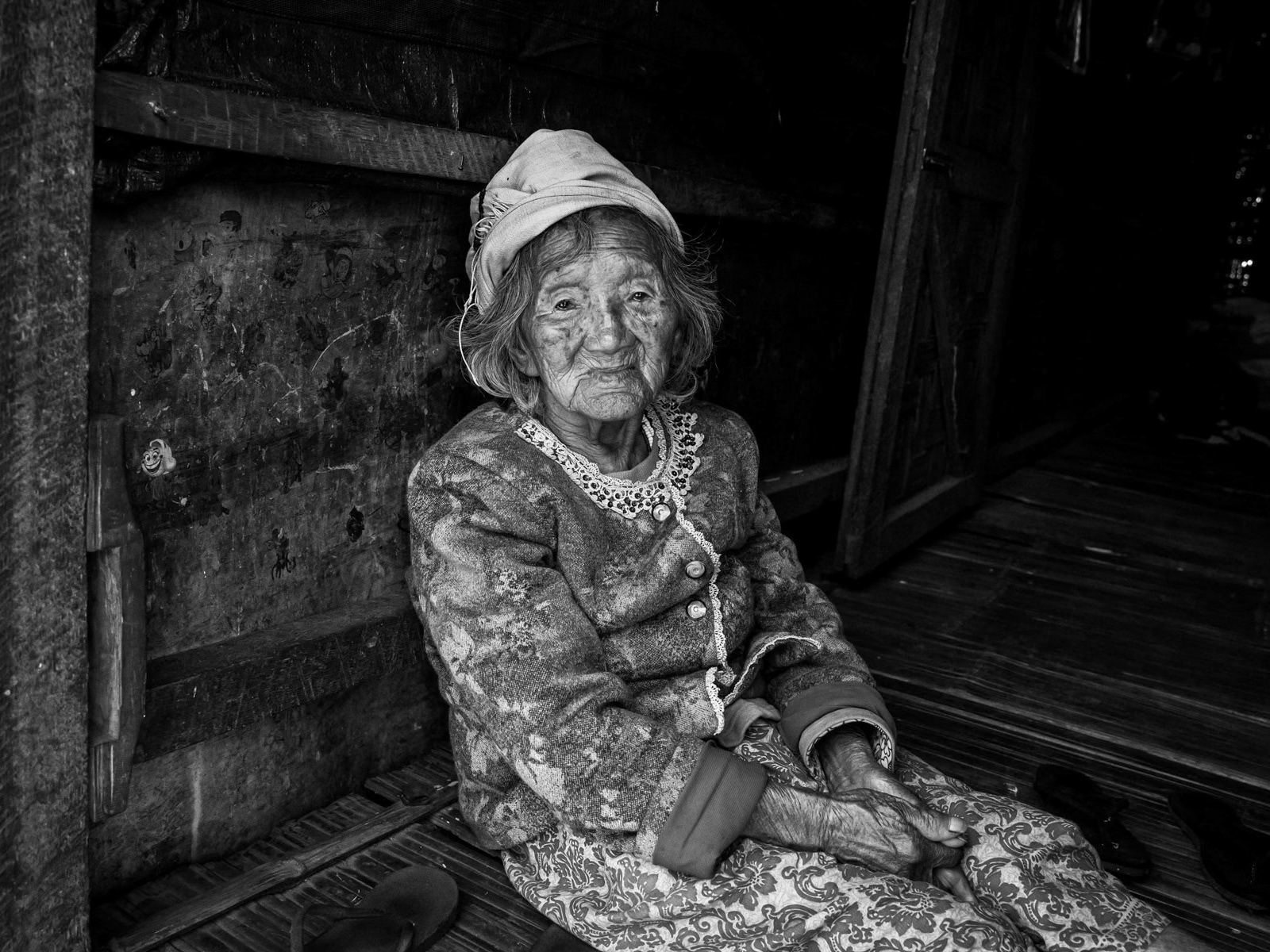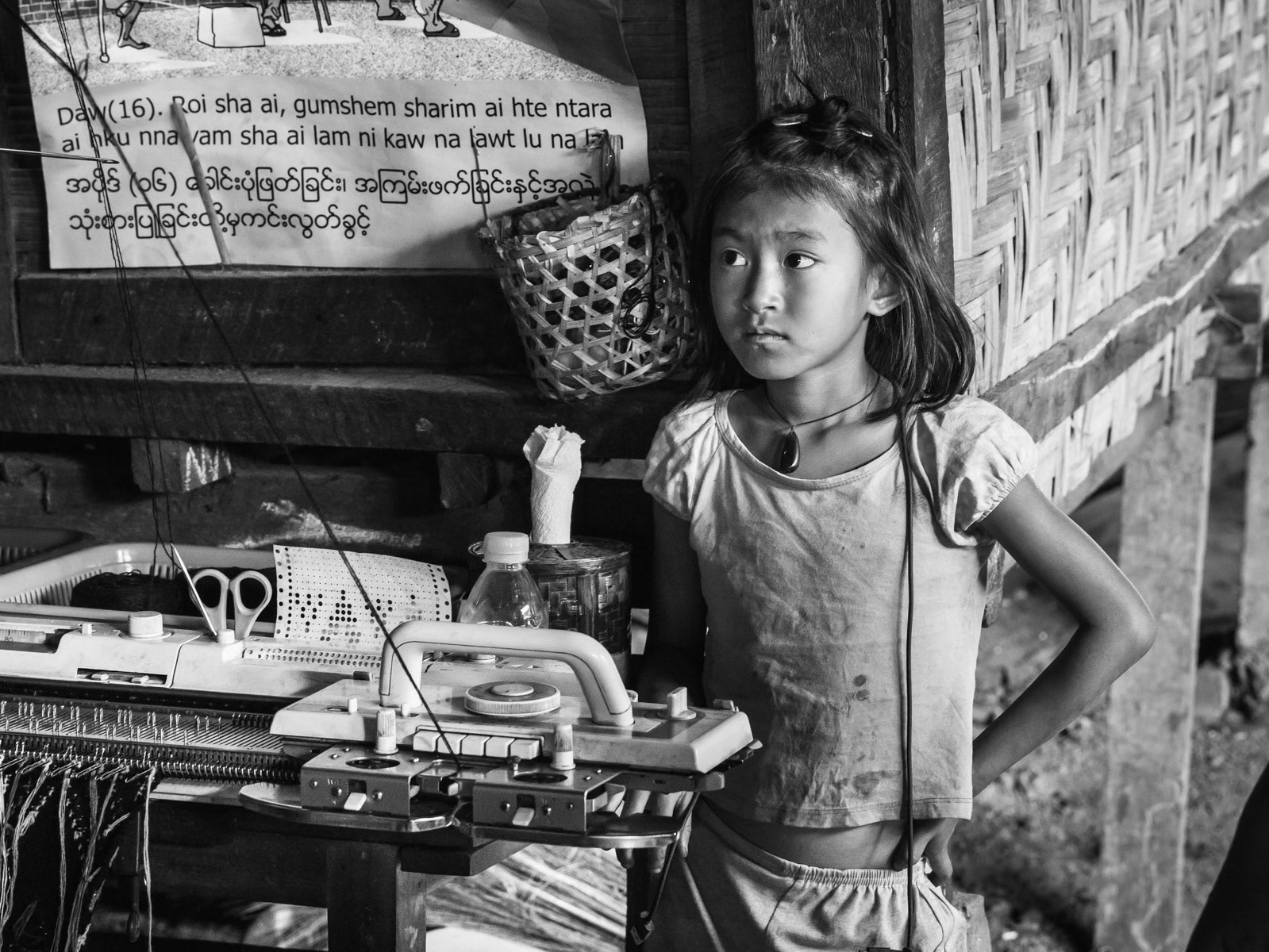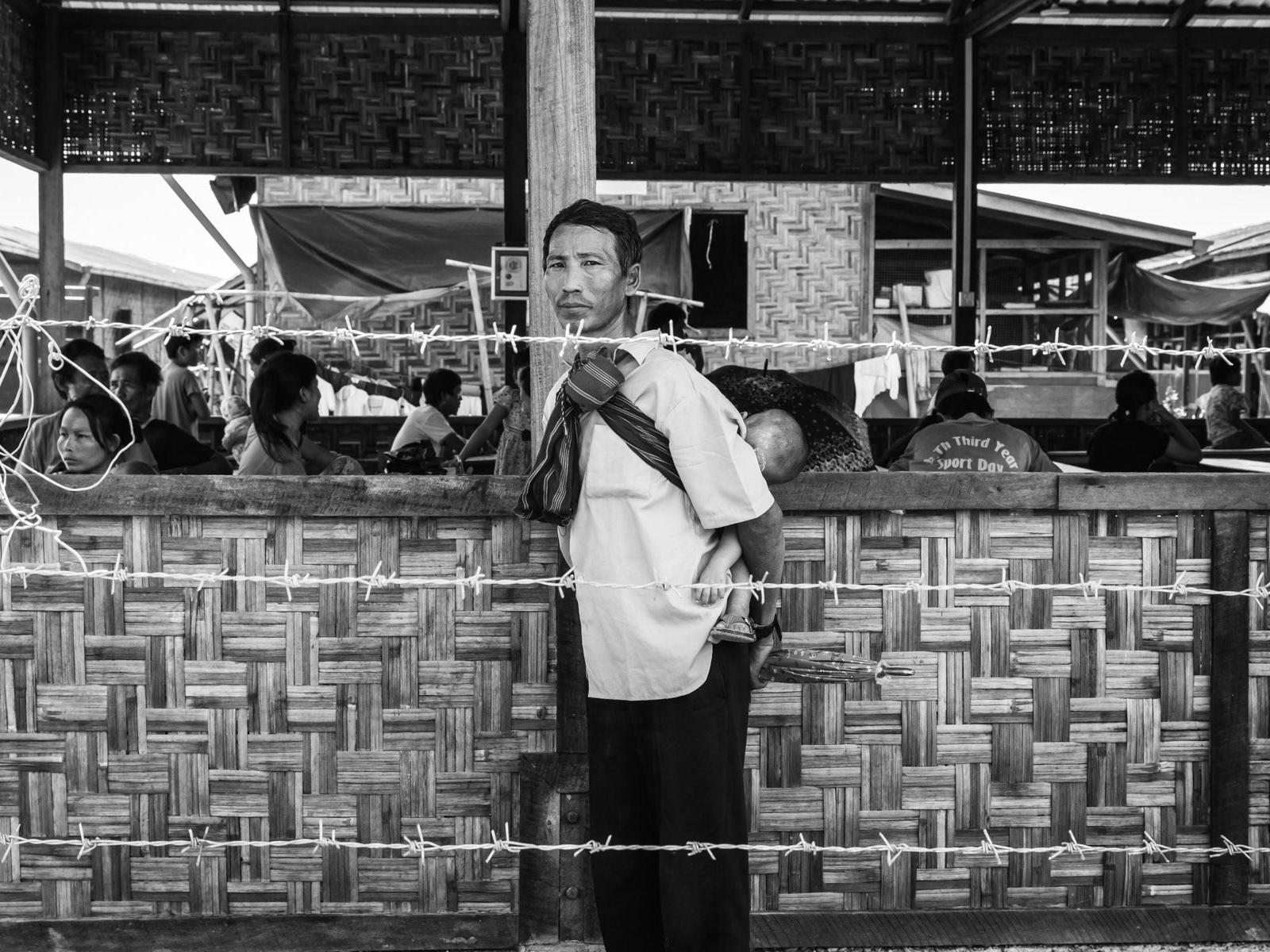In the Irrawaddy River near Myitkyina, Kachin State, Myanmar, small-scale gold divers risk their health and lives in the pursuit of a meager income. Working from makeshift rafts, these divers descend to depths of 15 meters, often staying submerged for up to two hours at a time. They repeat these dives twice daily during the four-month gold-digging season. Despite their efforts, they extract only modest quantities of gold, as large industrial mining operations upstream dominate the region, depleting resources and leaving little for small-scale miners.
This dangerous work comes at a high cost. Divers frequently suffer from decompression sickness due to inadequate surface intervals and repeated deep dives. Additionally, they are exposed to mercury, a toxic metal used to separate gold from sediment. Mercury poisoning damages their nervous systems, causing symptoms ranging from tremors to memory loss and kidney failure.
The use of mercury in gold extraction exacerbates environmental pollution. Mercury released into the river contaminates aquatic ecosystems, threatening fish populations and other wildlife. Over time, it bioaccumulates, affecting communities reliant on the river for food and water. The cumulative impact of industrial and small-scale mining has left a lasting scar on the Irrawaddy River, endangering human health and the fragile environment.
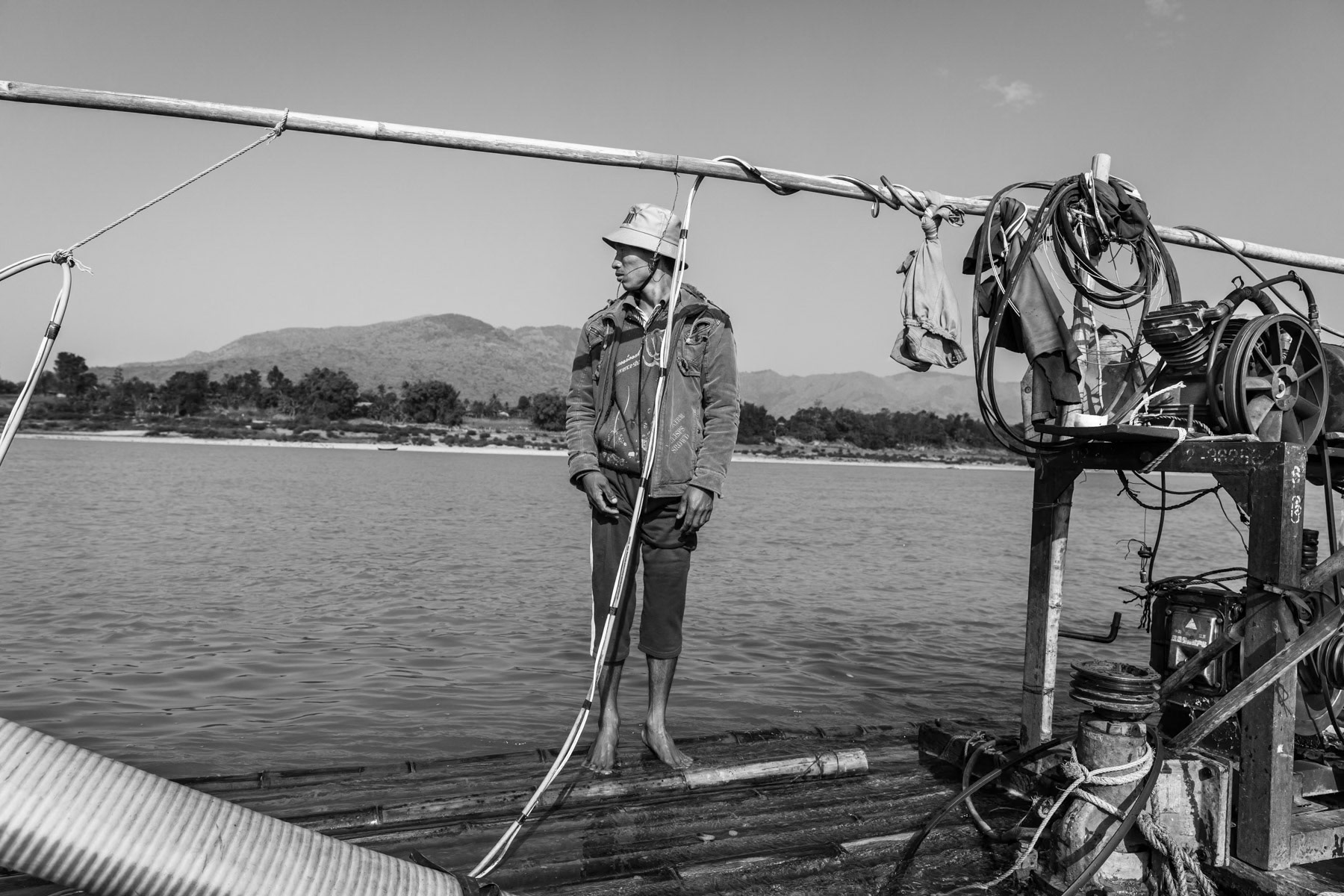
The helper and second diver waiting and controlling the compressor on the raft while his colleague is under water collecting soil and sediment that will be separated on the raft in order to recover gold residue. Irrawaddy River north of Myitkyina, Kachin State, Myanmar, February 2020
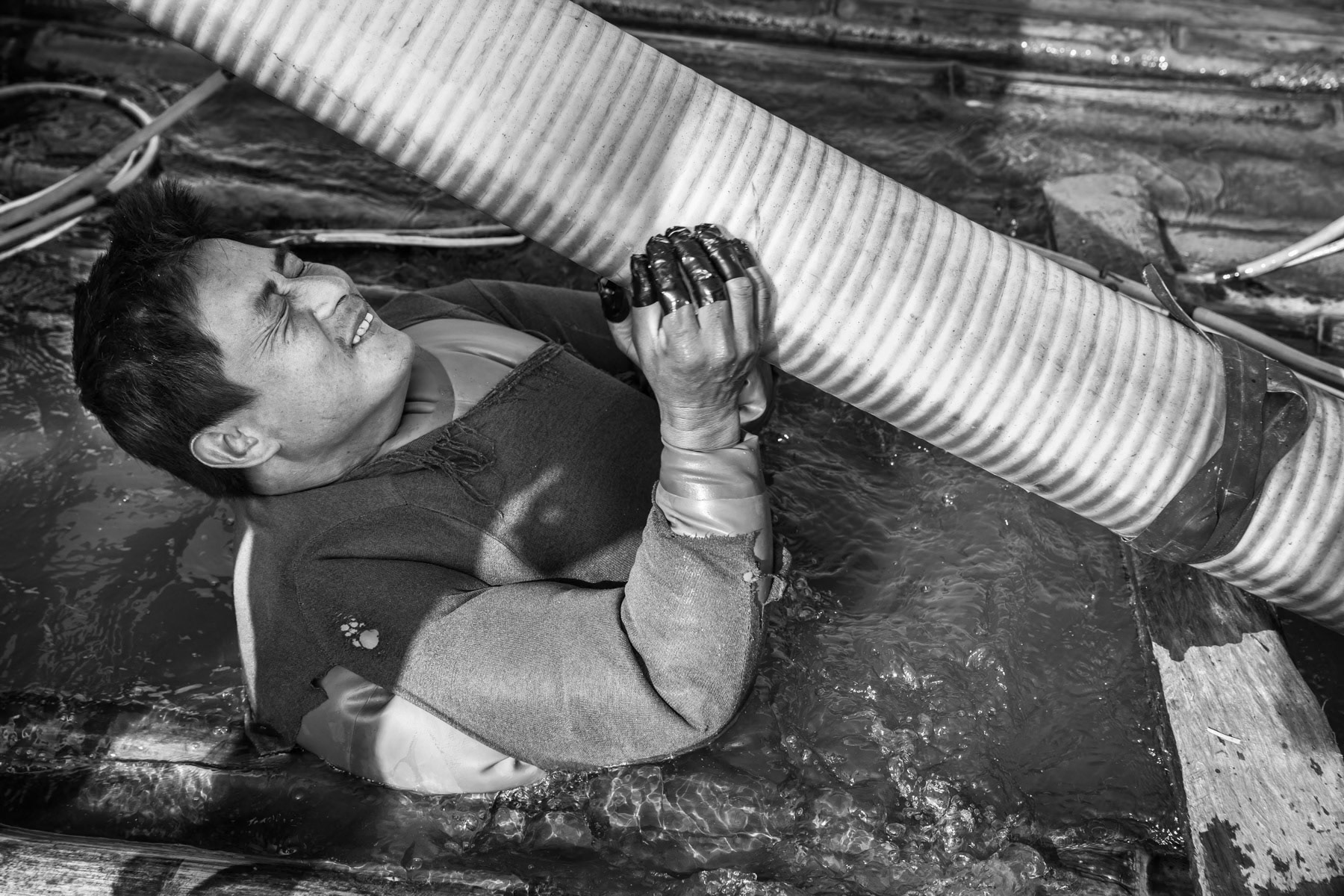
A gold diver getting ready to spend 3-4 hours underwater sucking up soil and sediment from the riverbed through the large hose. A team of 2 divers make in average 60 to 80 USD per day during the gold diving season between December and March. Irrawaddy River, Kachin State, Myanmar, February 2020
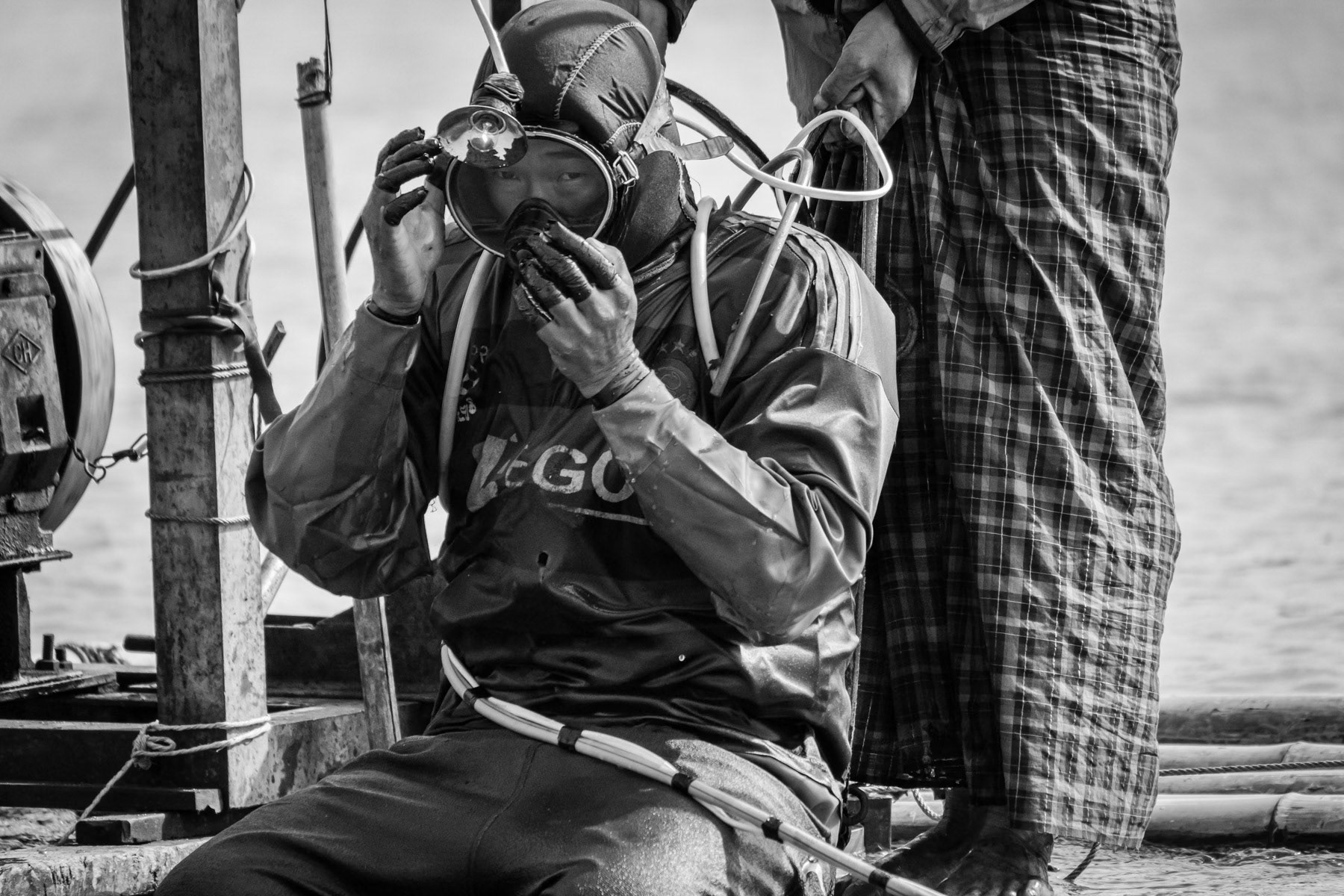
A gold diver fixing his compressed air supply and head lamp before diving to the riverbed where he will stay 3-4 hours and collect river soil through a sucking hose. Gold will afterwards be extracted from the soil using extremely toxic mercury. Irrawaddy River, Myitkyina Township, Kachin State, Myanmar, February 2020
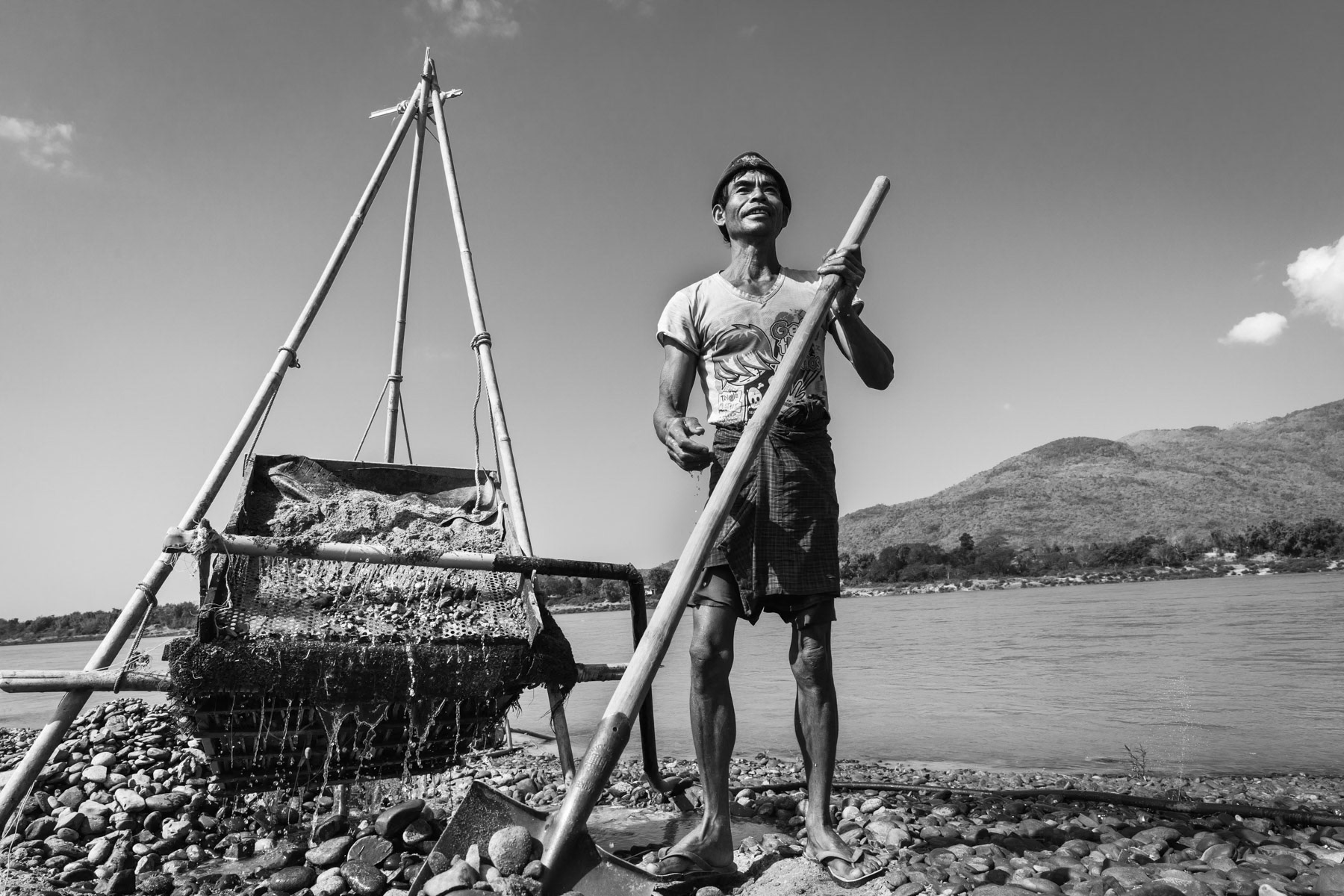
A local Kachin villager searching for gold along the Irrawaddy river north of Myitkyina in Kachin State, Myanmar, March 2019
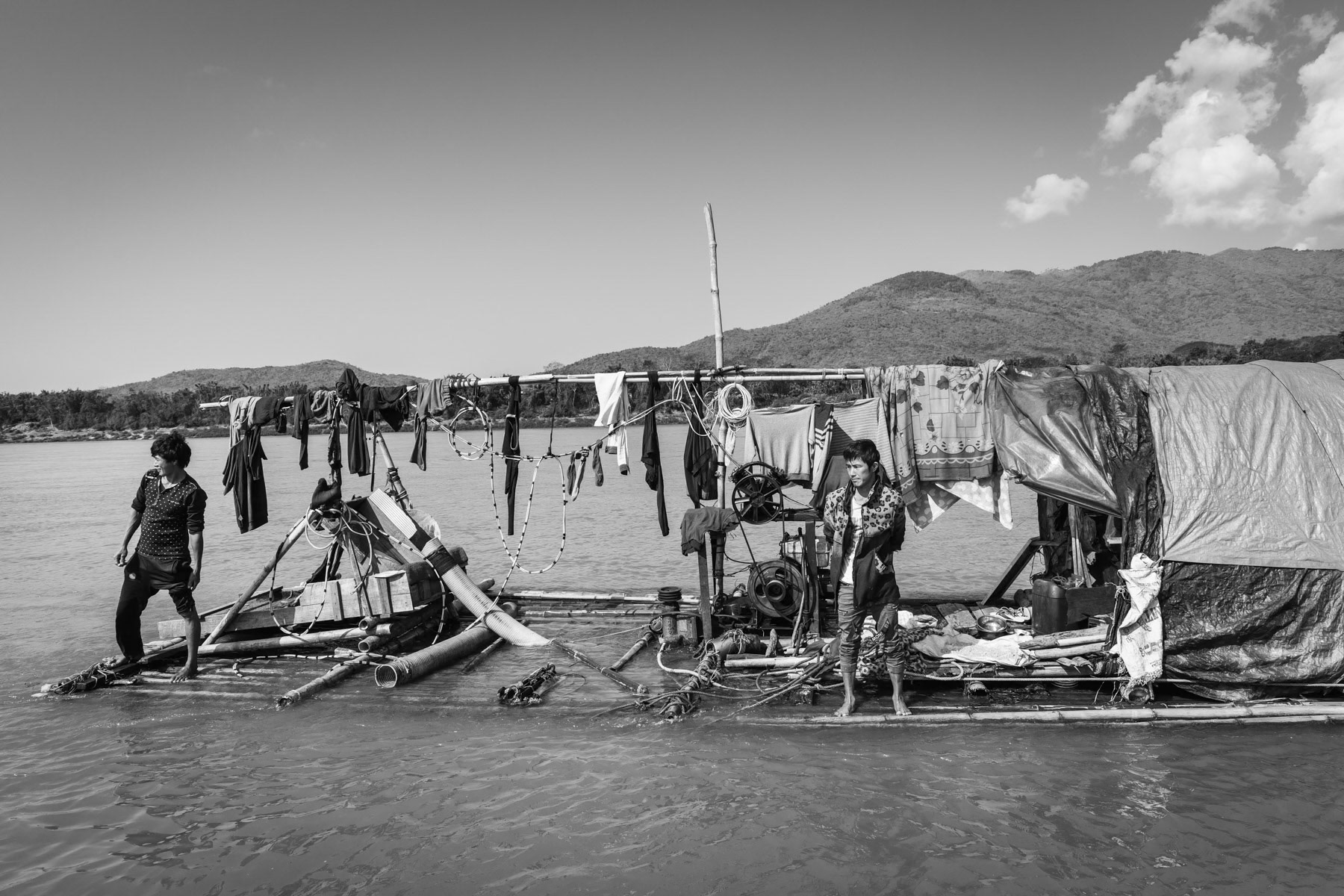
Divers on a small scale gold digging raft. Divers dive up to 2 hours at 15 metres depth and up to 2 times per day for about 4 months per year. This health hazardeous activity generates very little income as the large industrial gold digging companies upstream extract the bulk of the gold. Divers are regularly confronted with decompression sickness due to repetitive diving and mercury poisoning. Irrawaddy river north of Myitkyina, Kachin State, Myanmar, March 2019
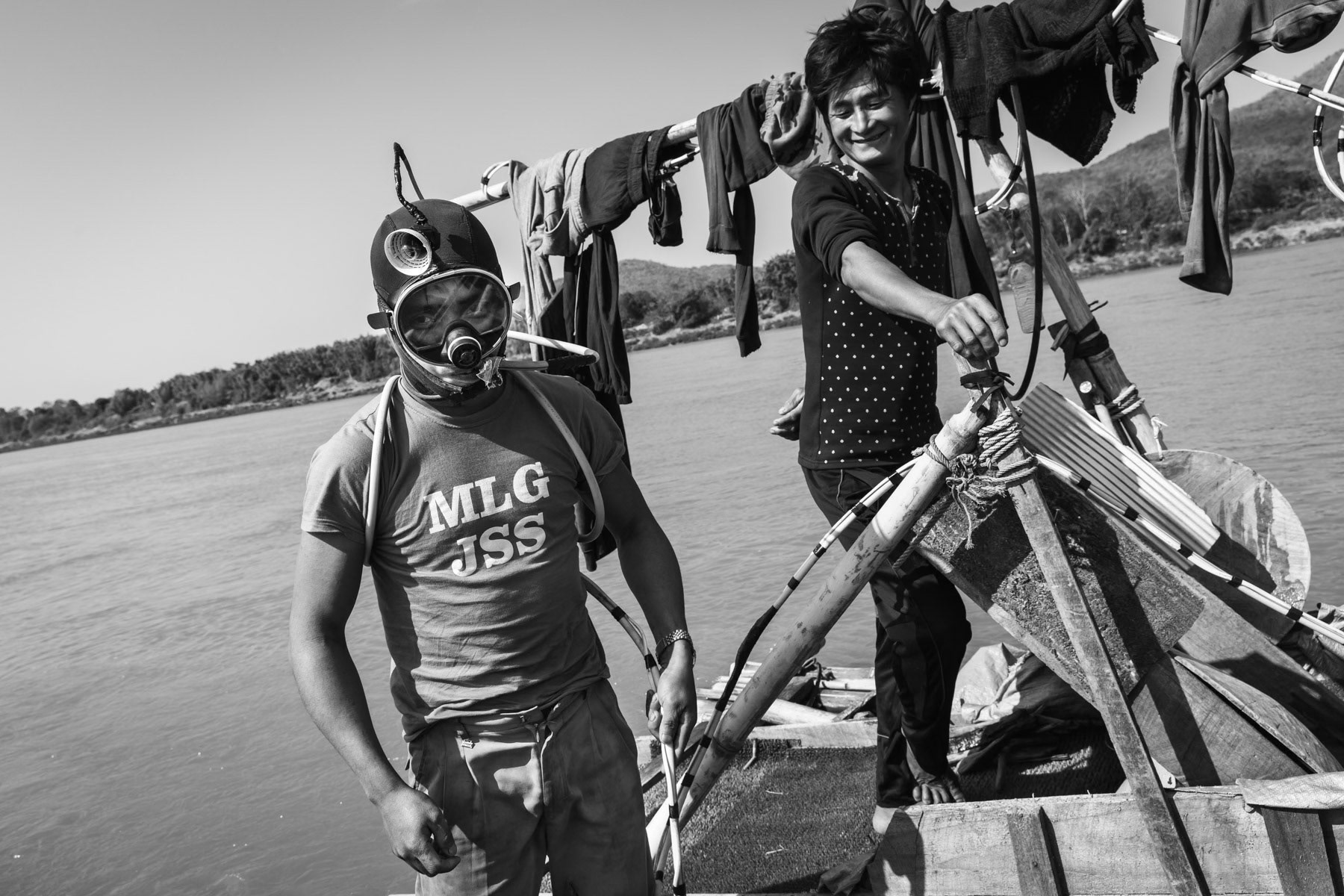
DiEvers on a small scale gold digging raft. Divers dive up to 2 hours at 15 metres depth and up to 2 times per day for about 4 months per year. This health hazardeous activity generates very little income as the large industrial gold digging companies upstream extract the bulk of the gold. Divers are regularly confronted with decompression sickness due to repetitive diving and mercury poisoning. Irrawaddy river north of Myitkyina, Kachin State, Myanmar, March 2019
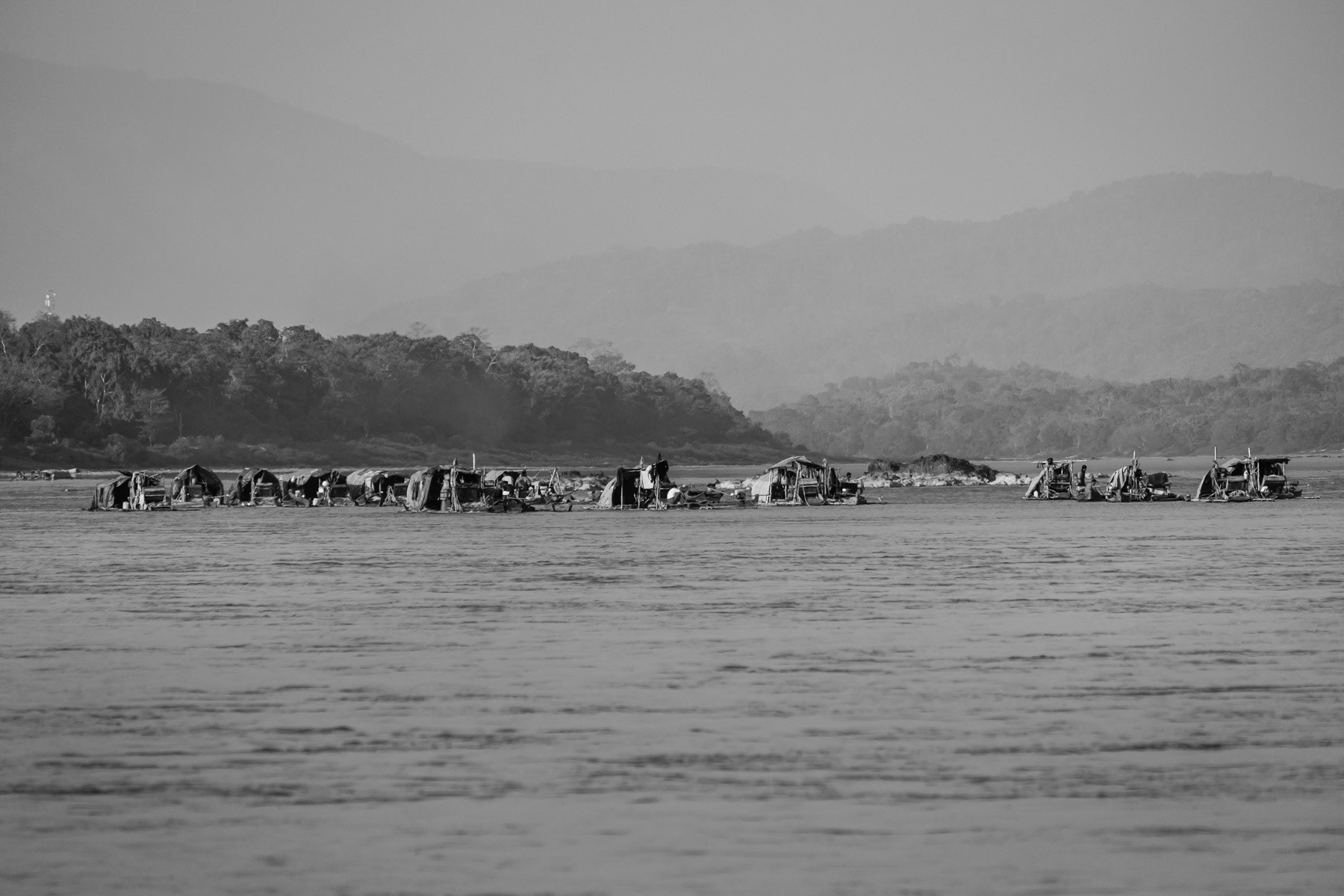
Rafts used by local small scale gold divers. The season lasts from December to the end of March. One boat makes in average 60 to 80 USD per day and consists of 2 divers who dive 3-4 hours each, one in the morning and the other in the afternoon while the other stays on the raft. They dive at a depth of 10 to 15m with compressed air. Their equipment is extremely rudimentary and accidents occur frequently. They dive every single day in extremely strong currents and very cold water not exceeding 10-12C. With a large diametre hose they suck soil and sediments from the river bed up to the boat. Mercury, which is very toxic, is being used to make the gold stand out and blink. All the operations are done on the boat. Only people from the nearby villages are allowed to operate small scale gold digging activities, most of them are from the Lazi Kachin minority. Irrawaddy river north of Myitkyina, Kachin State, Myanmar, February 2020
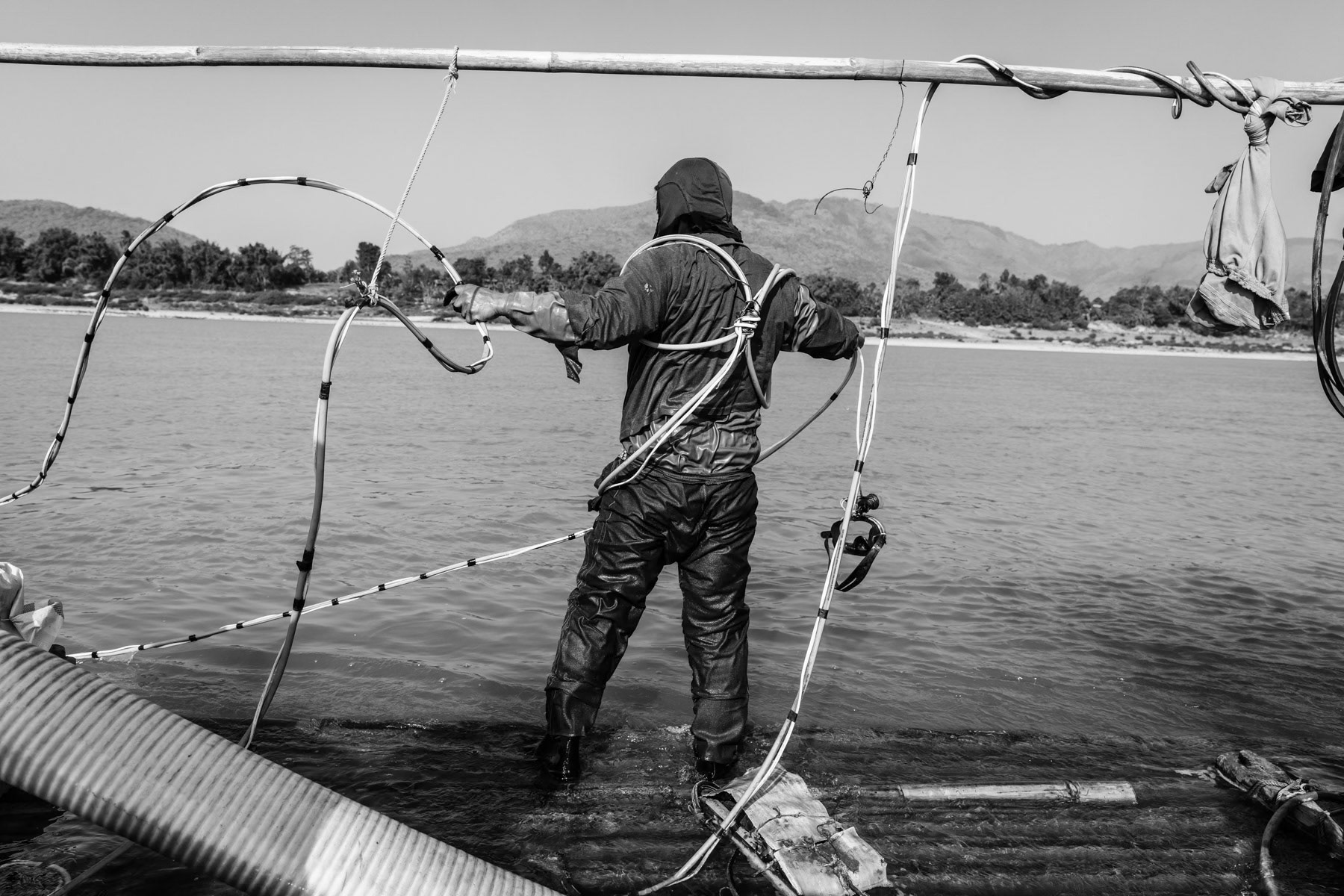
A gold diver getting ready to spend 3-4 hours underwater sucking up soil and sediment from the riverbed through a large hose. A team of 2 divers make in average 60 to 80 USD per day during the gold diving season between December and March. Irrawaddy River, Kachin State, Myanmar, February 2020
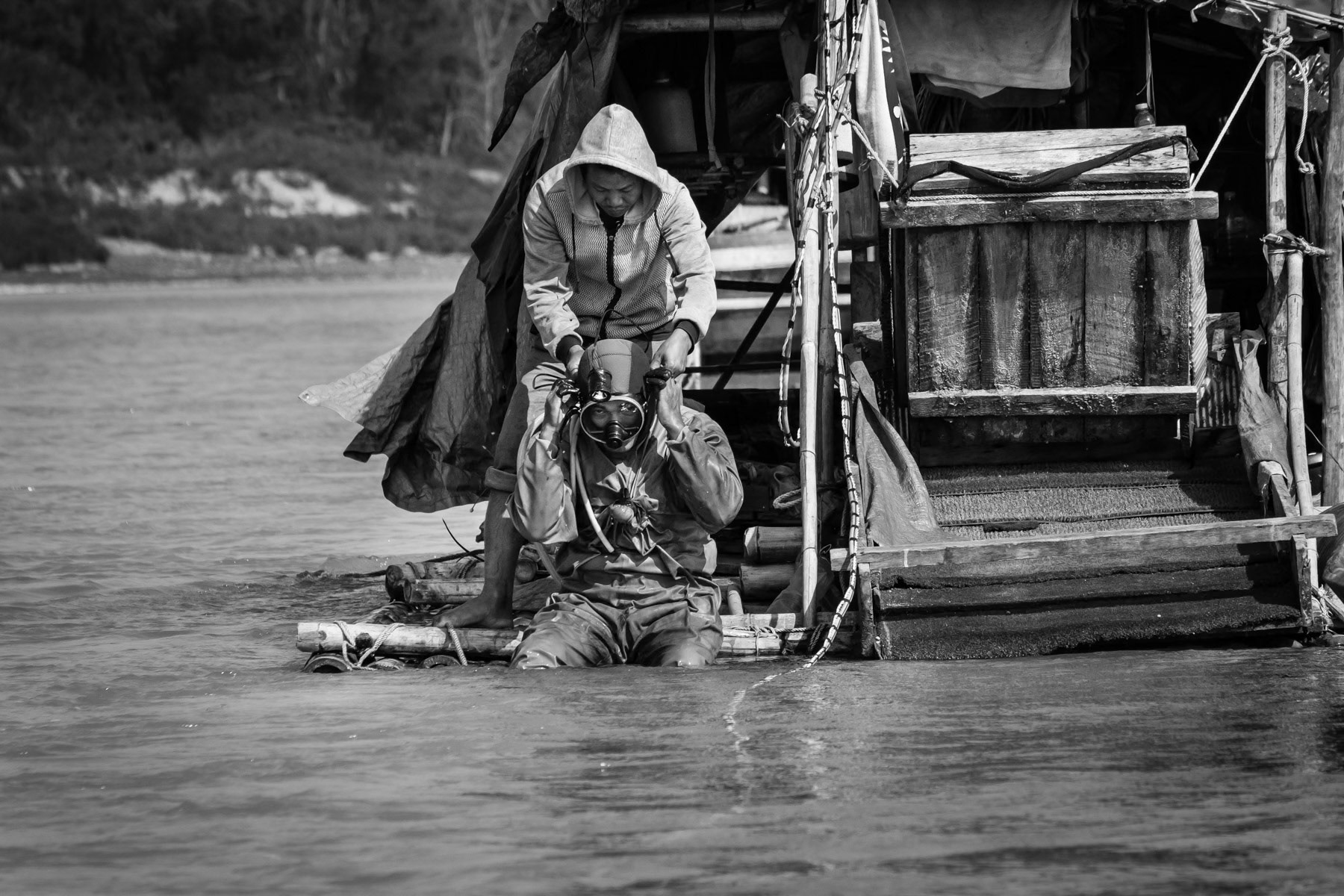
A gold diver fixing his compressed air supply and head lamp before diving to the riverbed where he will stay 3-4 hours and collect river soil through a sucking hose. Gold will afterwards be extracted from the soil using extremely toxic mercury. Irrawaddy River, Myitkyina Township, Kachin State, Myanmar, February 2020
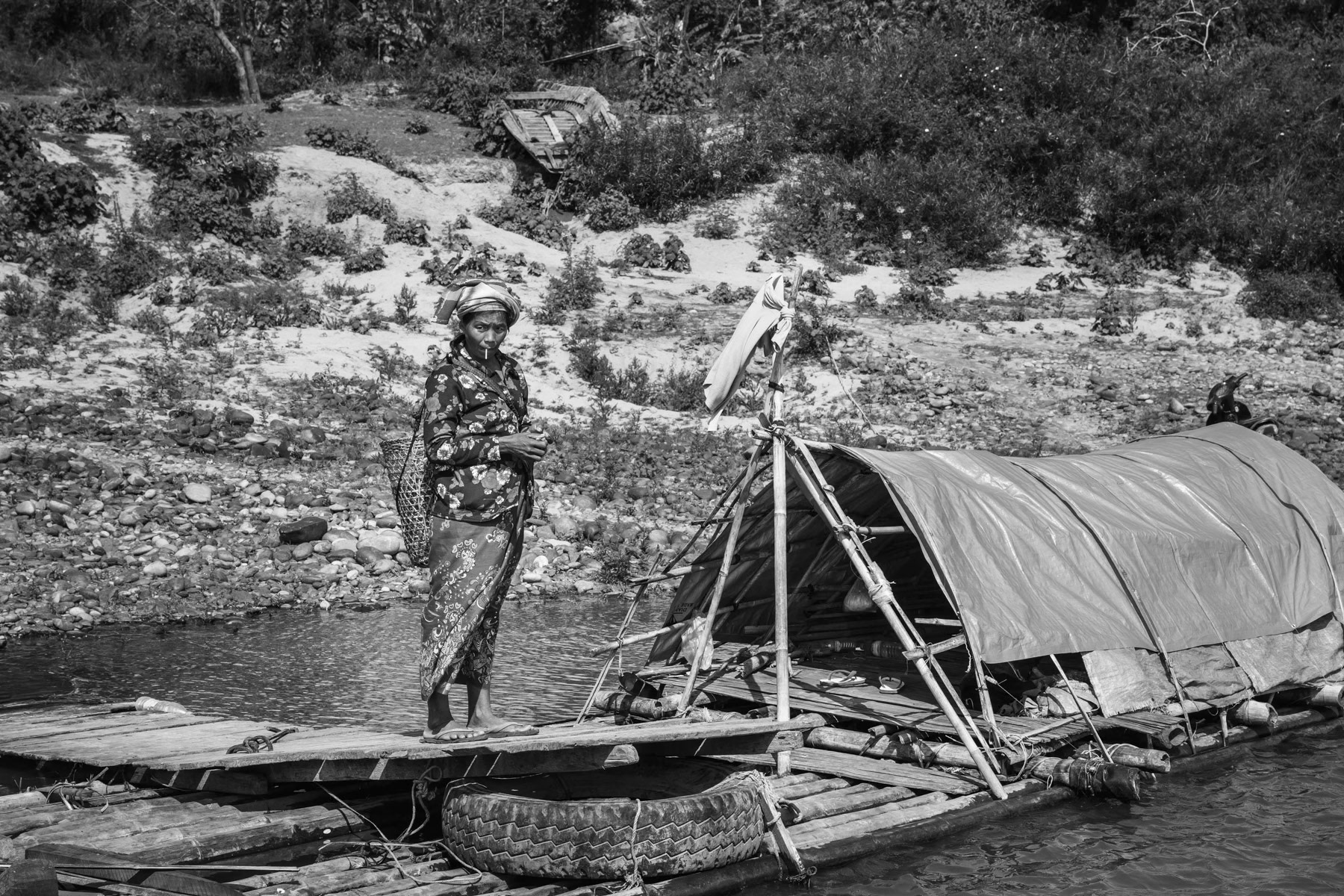
A Kachin woman waiting beside a gold digger's raft to cross the Irrawaddy river. The Irrawaddy river crosses the entire country and is the main lifeline and transport route of Myanmar. If a dam building project goes ahead it will change for ever the life of communities living along this mighty river and beyond. Kachin State, Myanmar, March 2019
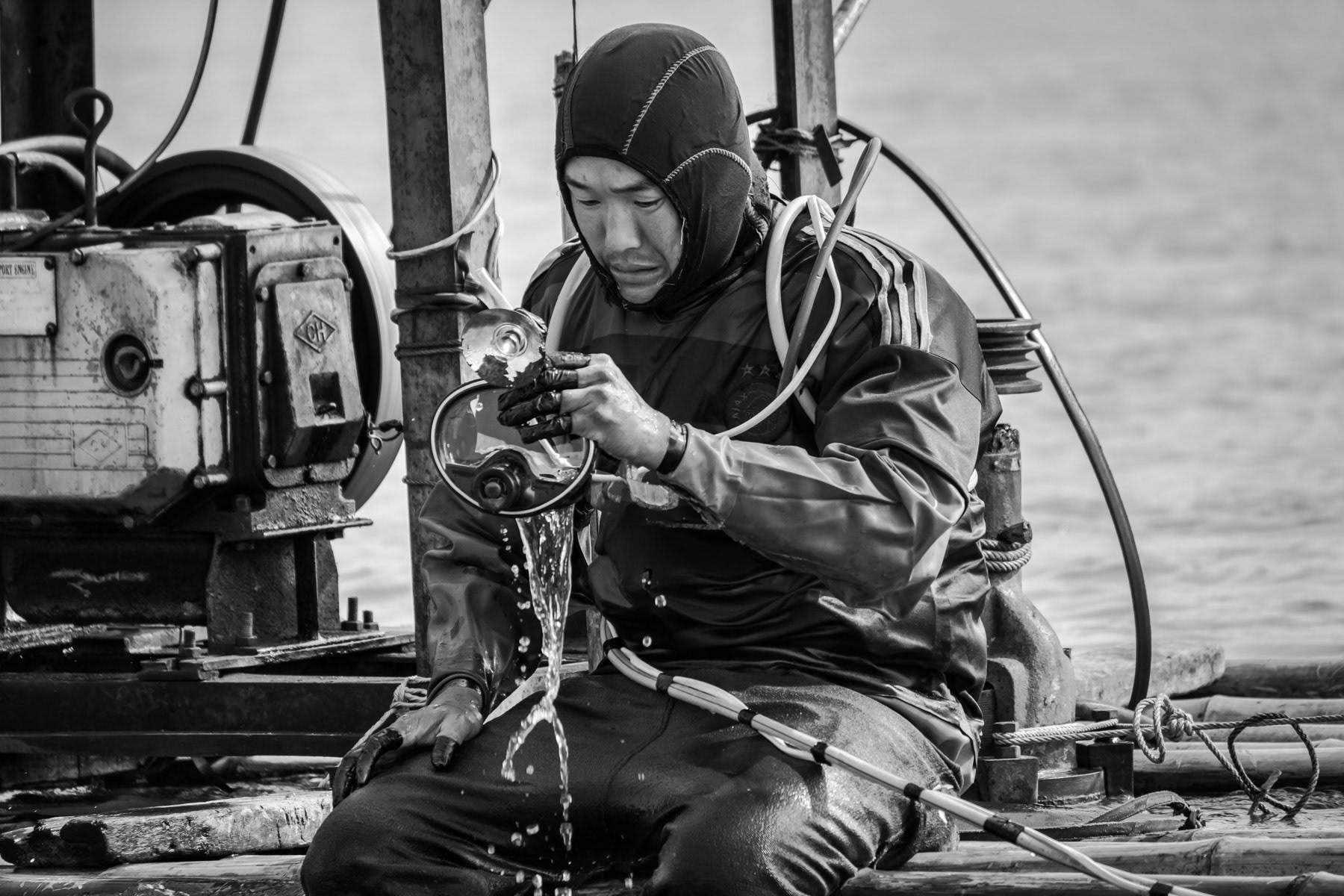
A gold diver getting ready to dive with compressed air for several hours at a depth of 10 to 15m. The equipment used and air compressor are very rudimentary and unsafe. Accidents and health issues are frequent as divers lack basic diving safety practices and do dive repeatedly every single day for several hours for 3 months in a row. The gold diving season is only allowed from December and March and is for villagers a unique opportunity to make money during the winter months despite the risks. Irrawaddy River north of the Kachin State capital Myitkyina, Myanmar, February 2020
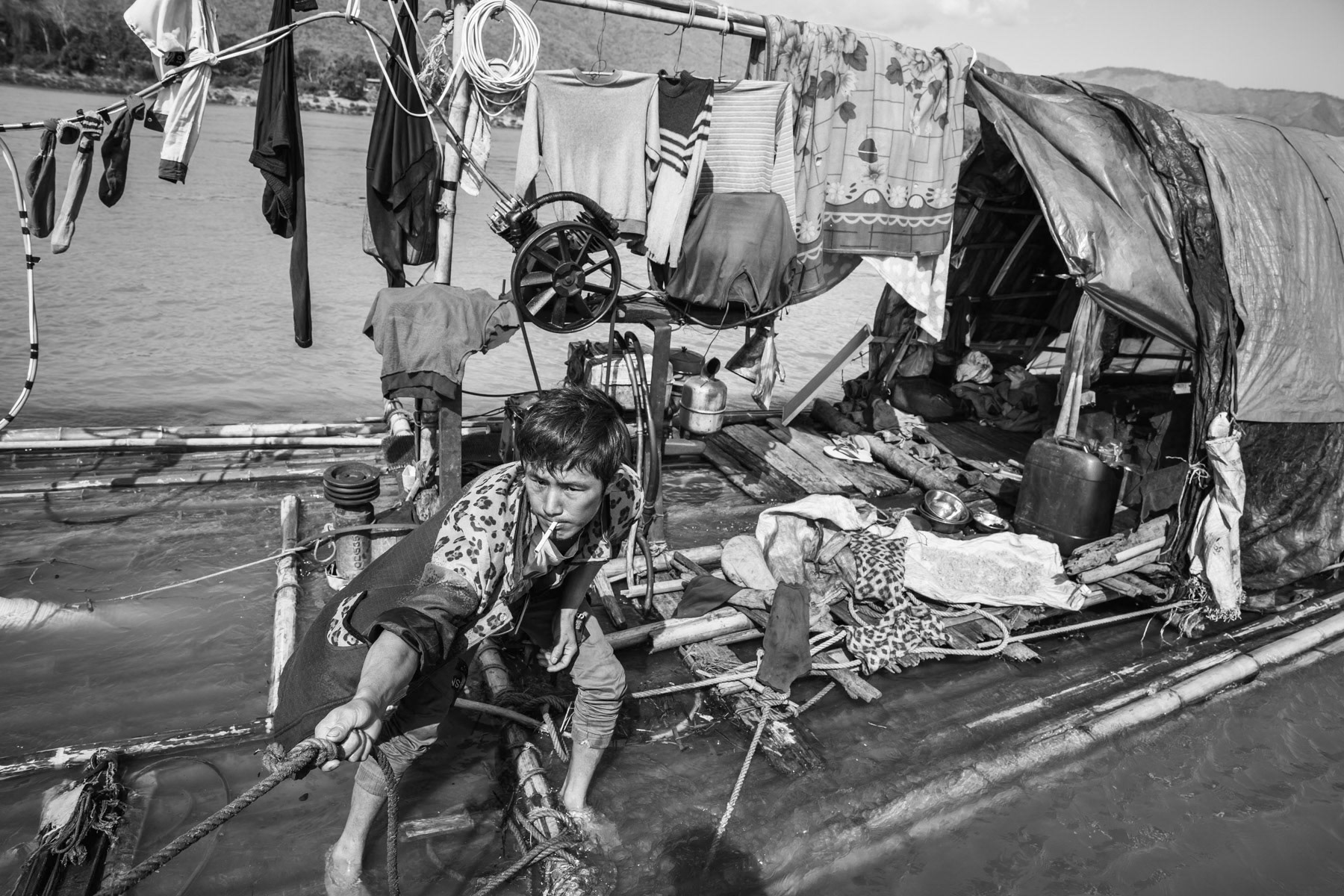
Divers on a small scale gold digging raft. Divers dive up to 2 hours at 15 metres depth and up to 2 times per day for about 4 months per year. This health hazardeous activity generates very little income as the large industrial gold digging companies upstream extract the bulk of the gold. Divers are regularly confronted with decompression sickness due to repetitive diving and mercury poisoning. Irrawaddy river north of Myitkyina, Kachin State, Myanmar, March 2019
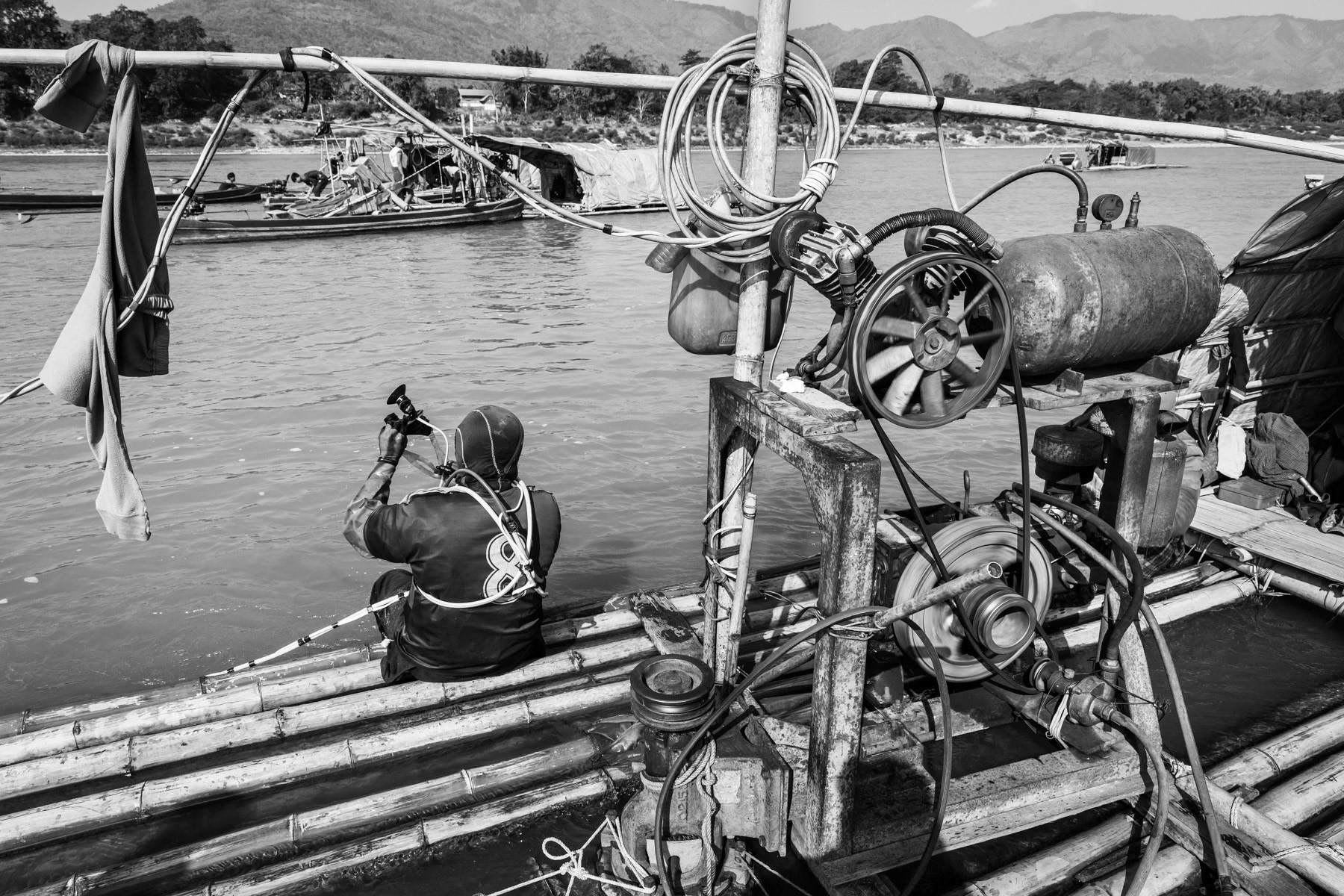
Raft used by local small scale gold divers. The season lasts from December to the end of March. One boat makes in average 60 to 80 USD per day and consists of 2 divers who dive 3-4 hours each, one in the morning and the other in the afternoon while the other stays on the raft. They dive at a depth of 10 to 15m with compressed air. Their equipment is extremely rudimentary and accidents occur frequently. They dive every single day in extremely strong currents and very cold water not exceeding 10-12C. With a large diametre hose they suck soil and sediments from the river bed up to the boat. Mercury, which is very toxic, is being used to make the gold stand out and blink. All the operations are done on the boat. Only people from the nearby villages are allowed to operate small scale gold digging activities, most of them are from the Lazi Kachin minority. Irrawaddy river north of Myitkyina, Kachin State, Myanmar, February 2020
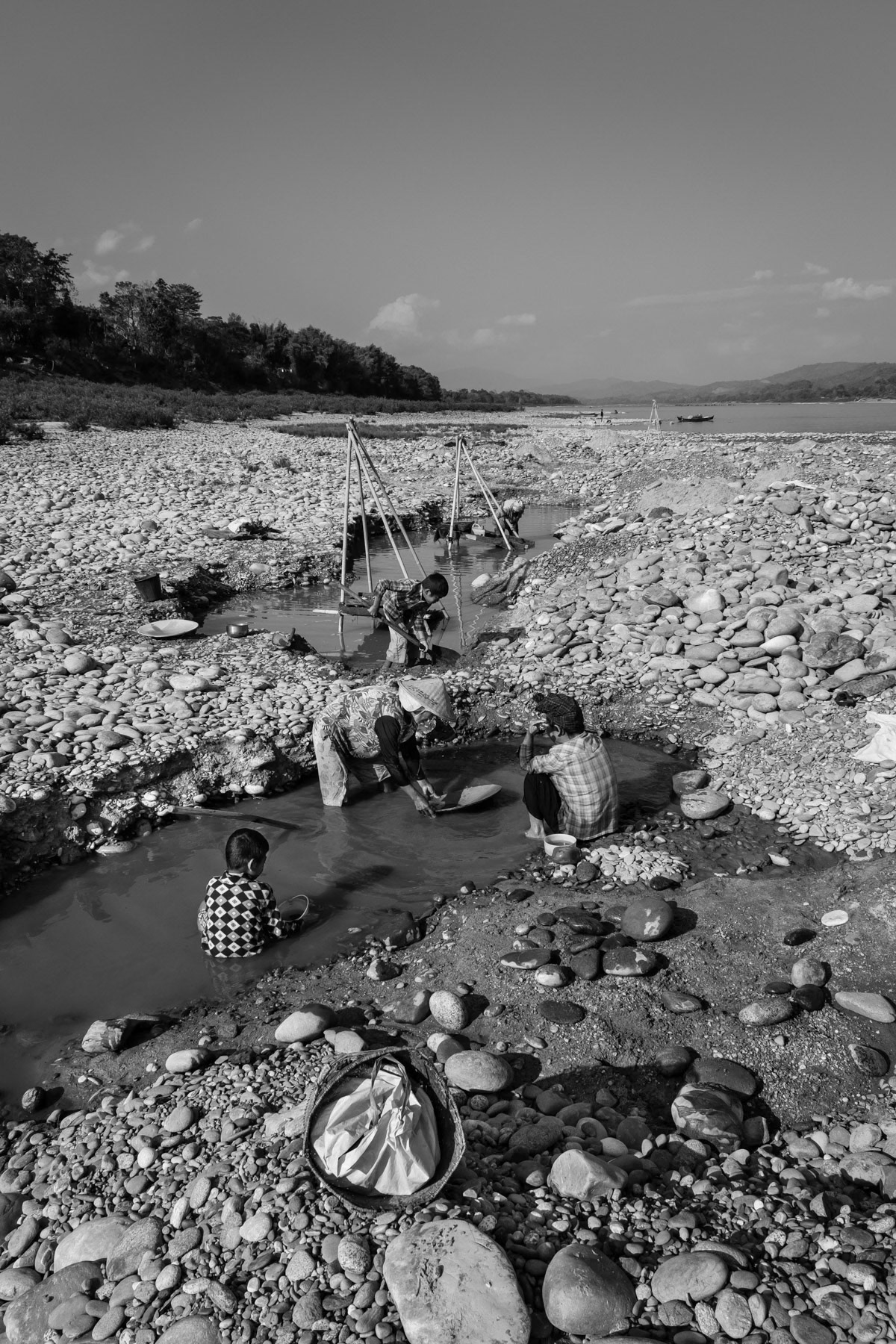
Kachin women from the Lazi ethnic sub-group digging along the shores of the Irrawaddy River to find gold and making in average 5-7 USD a day. They are allowed to do this activity for only a couple of months during the winter season. Lazi villages north of Myitkyina, Kachin State, Myanmar, February 2020
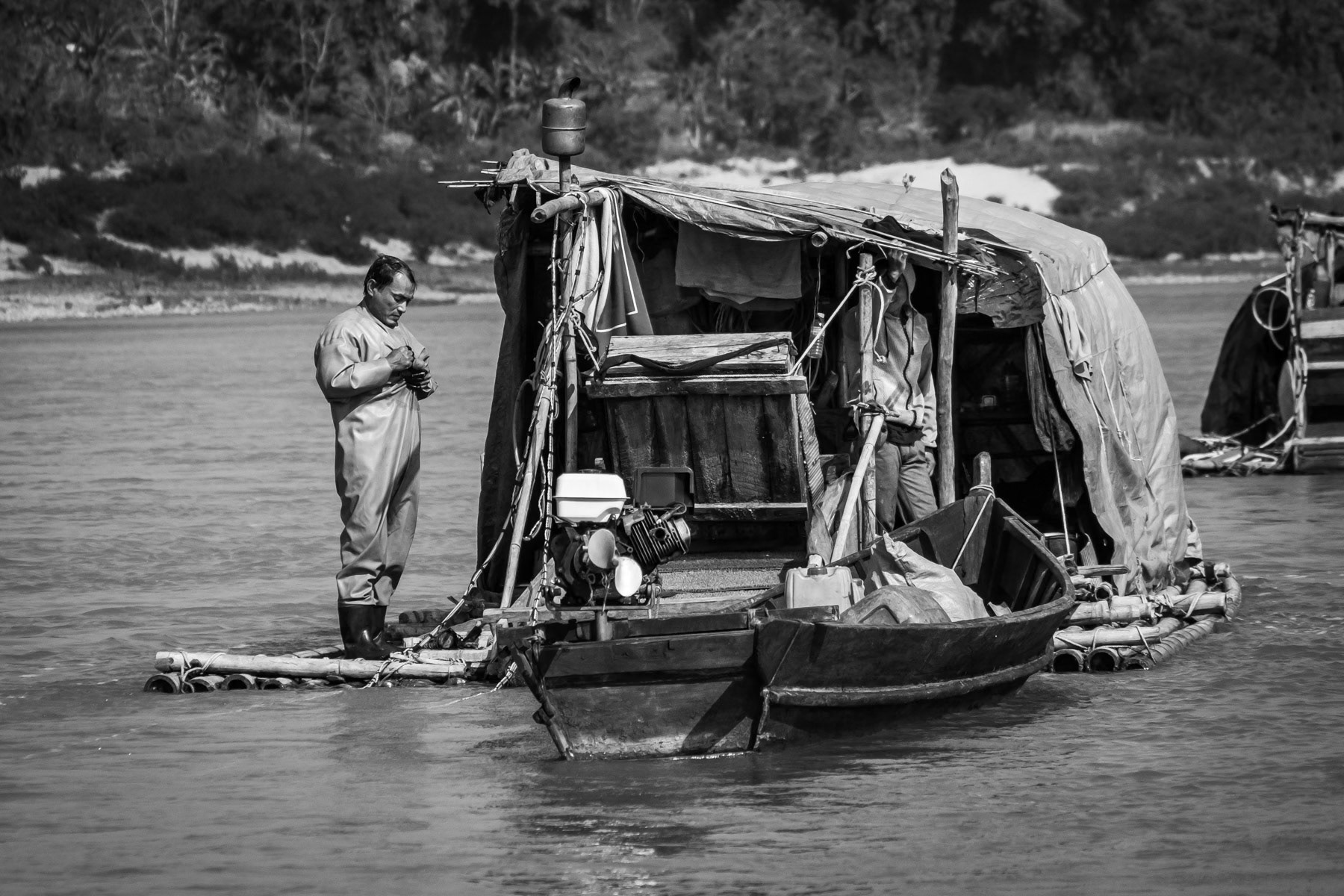
Raft used by local small scale gold divers. The season lasts from December to the end of March. One boat makes in average 60 to 80 USD per day and consists of 2 divers who dive 3-4 hours each, one in the morning and the other in the afternoon while the other stays on the raft. They dive at a depth of 10 to 15m with compressed air. Their equipment is extremely rudimentary and accidents occur frequently. They dive every single day in extremely strong currents and very cold water not exceeding 10-12C. With a large diametre hose they suck soil and sediments from the river bed up to the boat. Mercury, which is very toxic, is being used to make the gold stand out and blink. All the operations are done on the boat. Only people from the nearby villages are allowed to operate small scale gold digging activities, most of them are from the Lazi Kachin minority. Irrawaddy river north of Myitkyina, Kachin State, Myanmar, February 2020
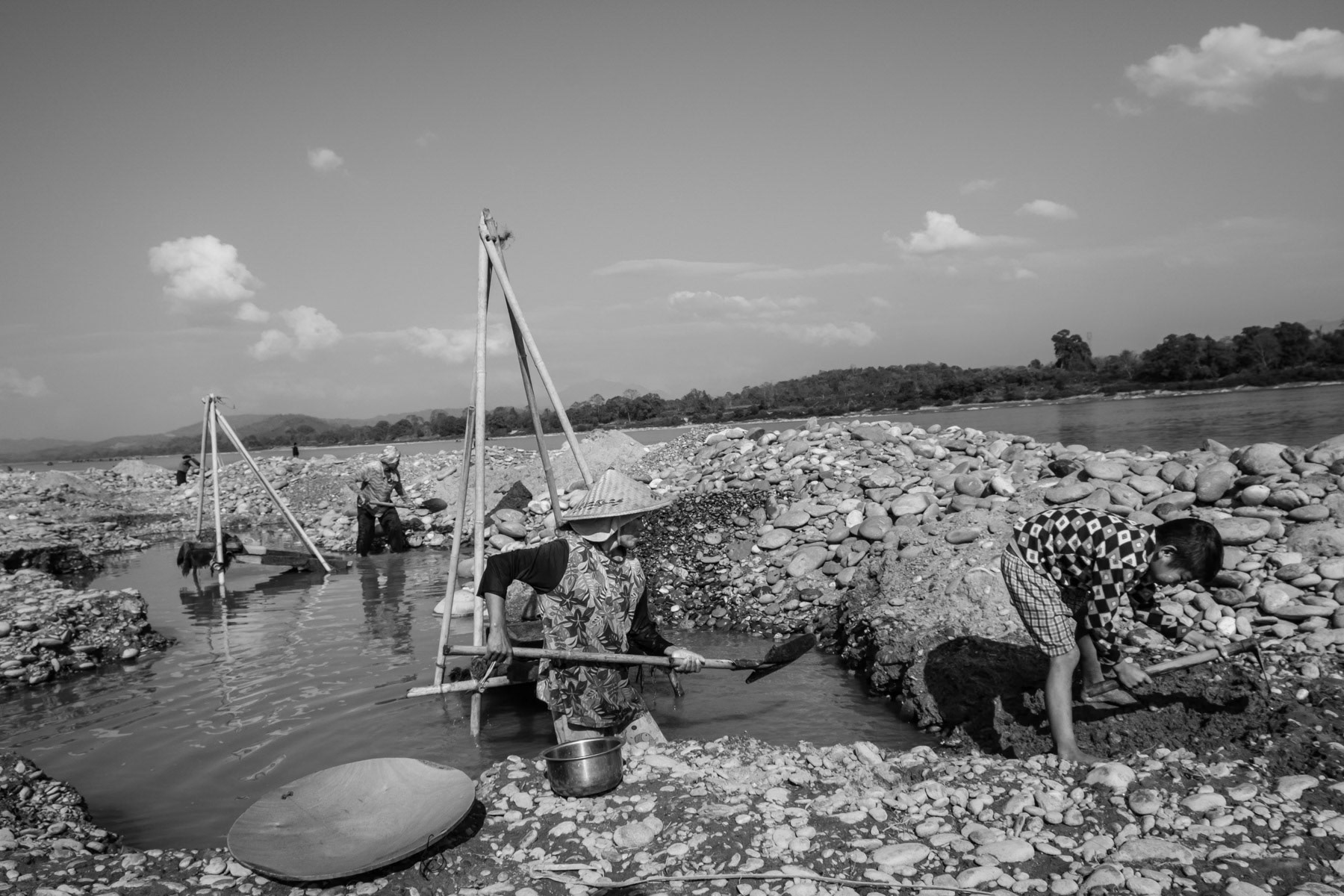
Kachin women from the Lazi ethnic sub-group digging along the shores of the Irrawaddy River to find gold and making in average 5-7 USD a day. They are allowed to do this activity for only a couple of months during the winter season. Lazi villages north of Myitkyina, Kachin State, Myanmar, February 2020
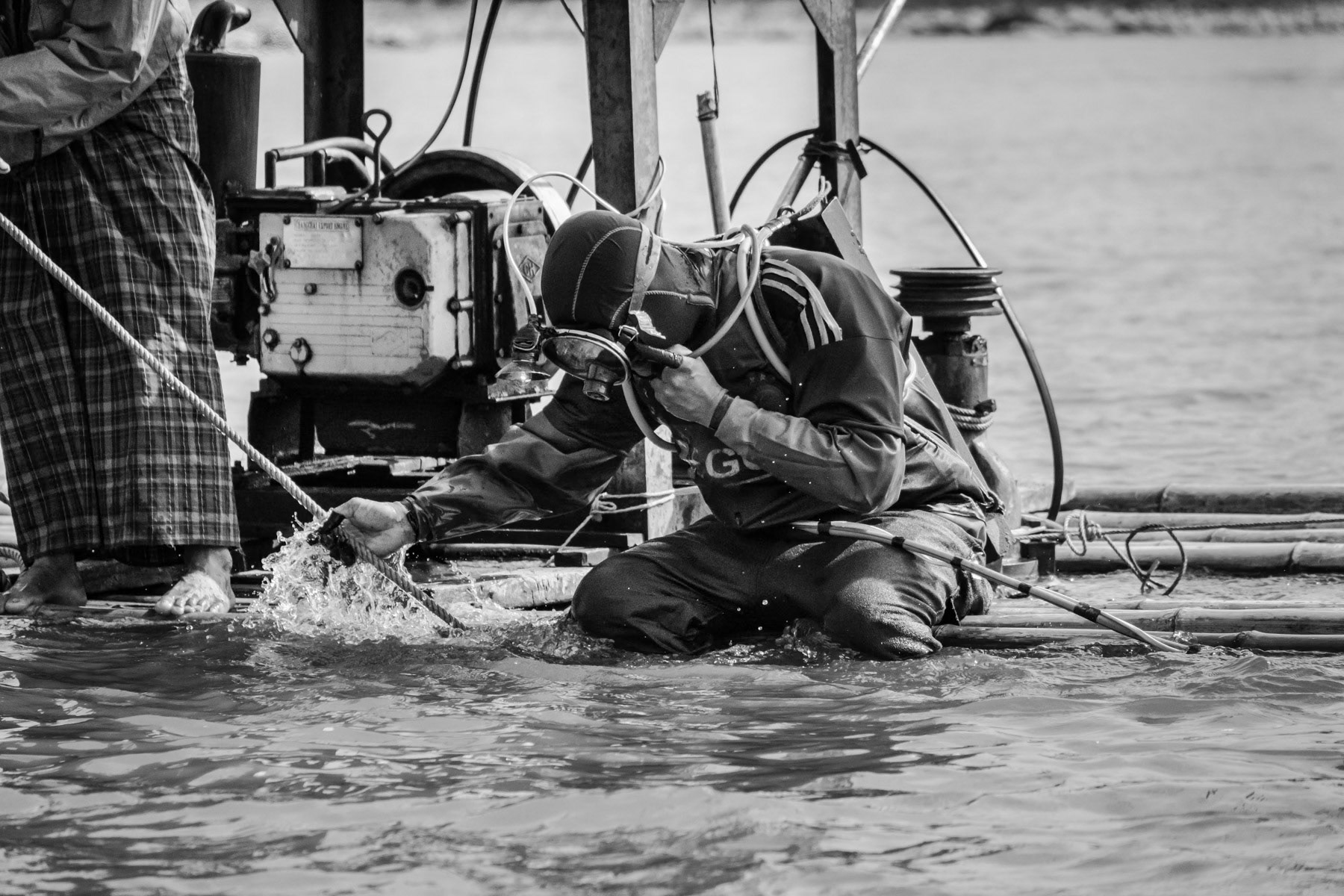
A gold diver fixing his compressed air supply and head lamp before diving to the riverbed where he will stay 3-4 hours and collect river soil through a sucking hose. Gold will afterwards be extracted from the soil using extremely toxic mercury. Irrawaddy River, Myitkyina Township, Kachin State, Myanmar, February 2020
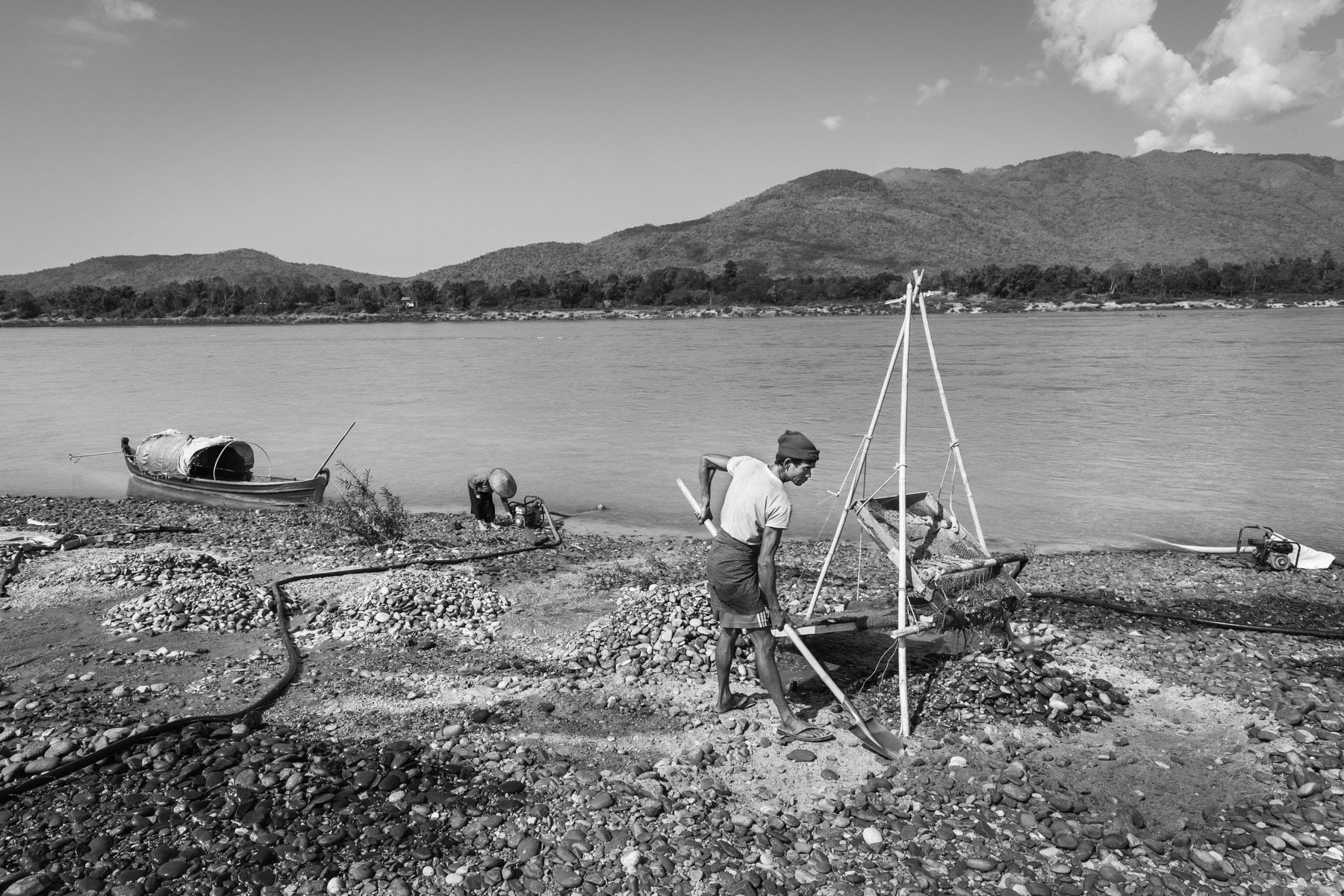
A local Kachin villager and his family searching for gold along the Irrawaddy river north of Myitkyina in Kachin State, Myanmar, March 2019
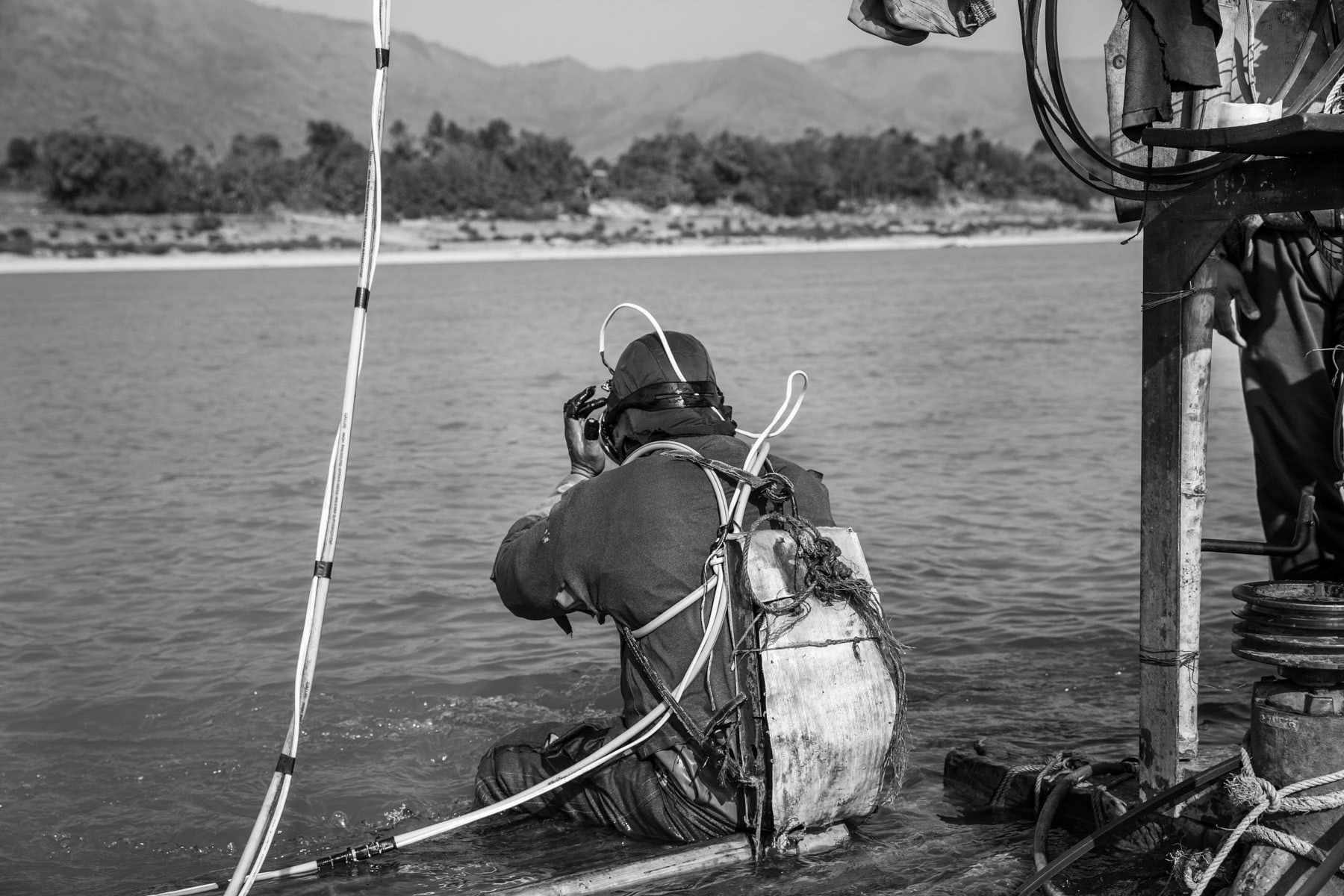
A gold diver getting ready to spend 3-4 hours underwater sucking up soil and sediment from the riverbed through a large hose. A team of 2 divers make in average 60 to 80 USD per day during the gold diving season between December and March. Irrawaddy River, Kachin State, Myanmar, February 2020
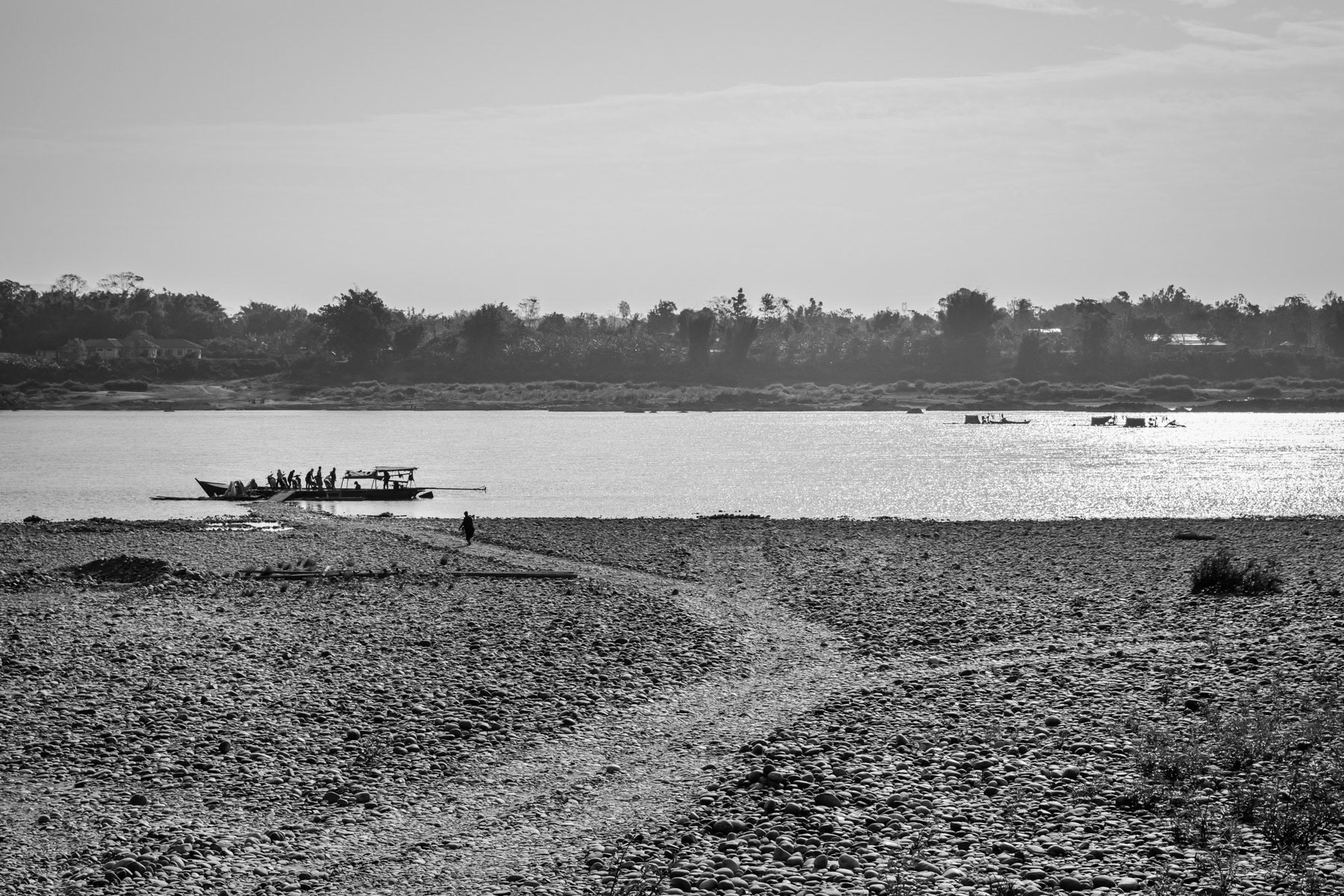
A ferry boat taking passengers and their motorbikes accross the Irrawaddy river 30 Km north of the State capital and the nearest bridge. Myitkyina Township. Kachin State, Myanmar, February 2020
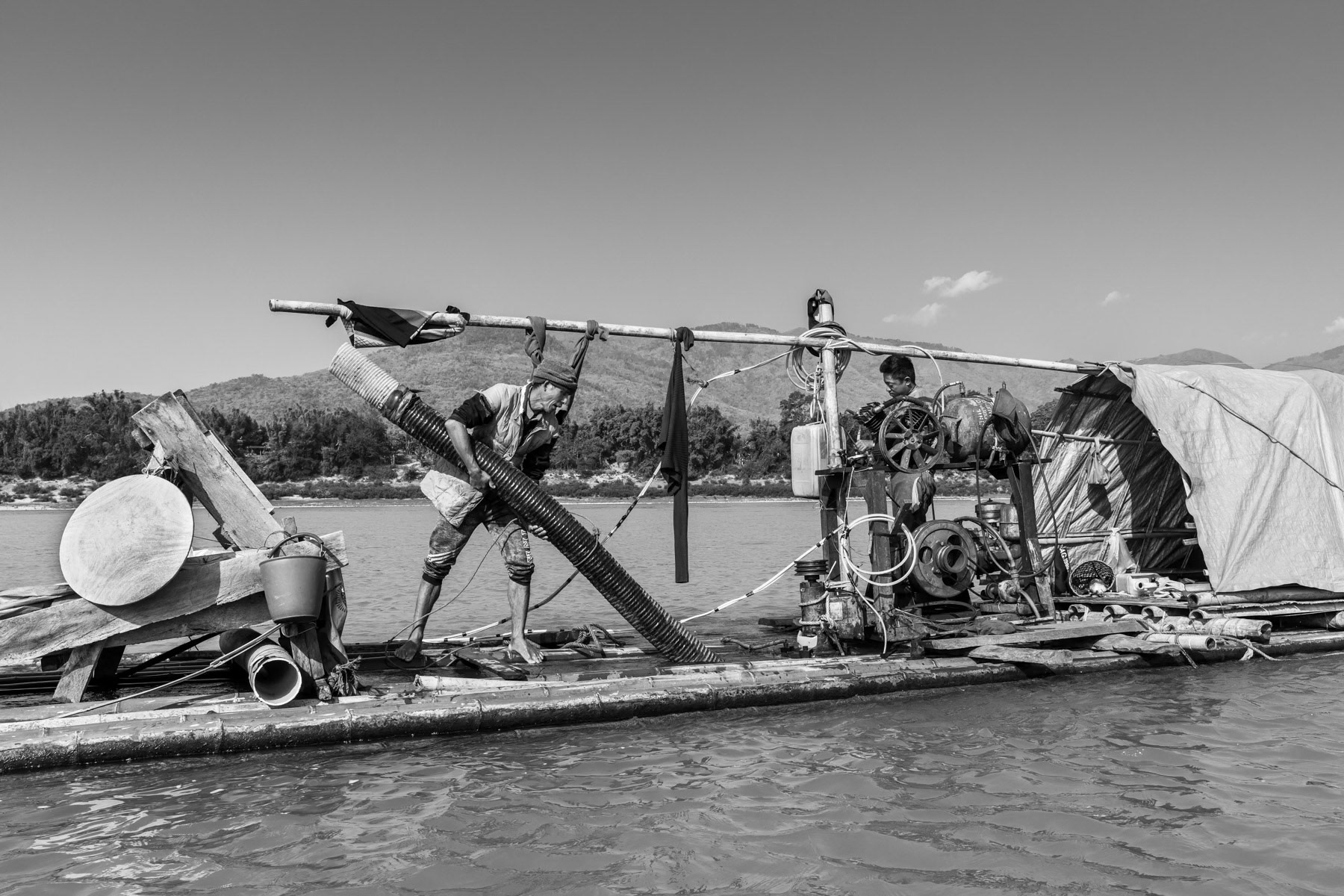
Raft used by local small scale gold divers. The season lasts from December to the end of March. One boat makes in average 60 to 80 USD per day and consists of 2 divers who dive 3-4 hours each, one in the morning and the other in the afternoon while the other stays on the raft. They dive at a depth of 10 to 15m with compressed air. Their equipment is extremely rudimentary and accidents occur frequently. They dive every single day in extremely strong currents and very cold water not exceeding 10-12C. With a large diametre hose they suck soil and sediments from the river bed up to the boat. Mercury, which is very toxic, is being used to make the gold stand out and blink. All the operations are done on the boat. Only people from the nearby villages are allowed to operate small scale gold digging activities, most of them are from the Lazi Kachin minority. Irrawaddy river north of Myitkyina, Kachin State, Myanmar, February 2020
